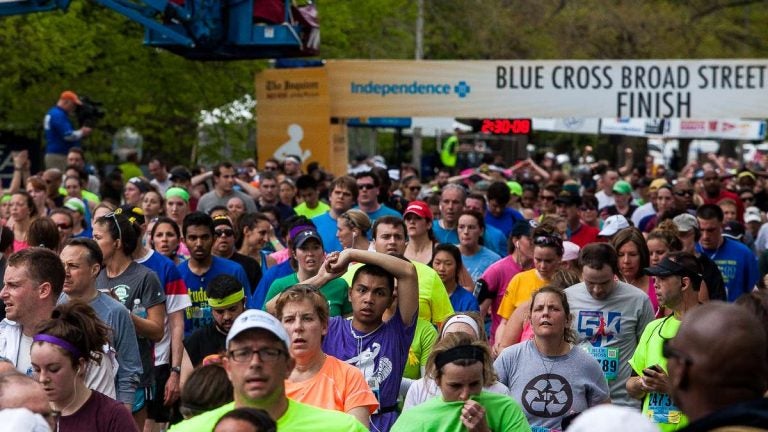Why I run Broad Street: For the health of it

In early January I signed up for the Broad Street Run, guaranteeing myself a bib by fundraising for the charity Back on My Feet. Their mission is to use “running to help those experiencing homelessness change the way they see themselves so they can make real change that results in employment and independent living.”
The phrase “experiencing homelessness” seemed to be a unique way to think about something to which I had rarely given any thought. Rather than label someone as “homeless” in an implicitly permanent manner, the statement stressed that such adversity could be temporary.
This mindset struck a chord in my own life, for a different challenge I had been facing. Throughout high school and college, my weight had fluctuated with varying levels of commitment to my own fitness. I had gotten into great shape sophomore year in college, only to see the weight return and then accelerate as I began my career.
For the first couple of years, I traveled regularly as a healthcare consultant, expensing meals and working odd hours that were unfriendly to healthy habits. The irony of being in healthcare and struggling with my weight was not lost on me, as this past December I had tipped the scales higher than ever. I had become resigned to this idea that I was just a “bigger guy,” in an implicitly permanent way.
4 decisions toward change
With an unhealthily high body mass index (BMI), I was very unhappy with my overall fitness. So at the behest of my girlfriend, I agreed to sign up for the Broad Street Run on one condition: that she would tolerate an obsessive level of training and healthy eating. I knew with a full-time career and a brutal winter, I had every opportunity to make excuses, but I had every responsibility to find time to change.
My first decision was to buy a fitness tracker. I chose the Basis, as it monitored the most metrics and did so with little intervention. I knew if I had to plug things in, I’d probably grow tired of the device.
The second decision was to change my eating habits. Through my aunt, a dietician, I learned to log what I ate each day. I ended up cooking lean chicken most nights, only eating at restaurants with calories shown on the menu, and cutting all liquids not named “water.”
The third decision was to tell everyone I knew, be it through personal interaction, blogging, or social media. Essentially I wanted to pressure myself to not lose focus. Keeping friends engaged in my progress kept me engaged.
The fourth decision was crucial: I had to run. I had always hated running, especially for running’s sake. I loved cycling, but I had long ago learned how to ride long distances even when I was clearly out of shape. Running form, on the other hand, was something I could not fake, so I knew that if I could slowly improve in running, I could see real results on the scale.
Making (and seeing) a real difference
Trying to run, for the first month and a half, really did hurt. The pain in my ankles was real and many nights I would complete no more than five to 10 minutes of jogging before walking another hour or so. The nights were long, but I found that my fitness tracker did not discriminate. Exercise was exercise, even if it took much longer for me than a well-conditioned athlete. I used the weekends to break from the gym and go on snow-filled hikes with my dog. This winter provided plenty of opportunities for such adventures, and walking in two feet of snow was one exhausting exercise.
As the weather changed, so did my physique, as I logged a loss of 35 pounds over three and a half months. I began running outside as my BMI dropped significantly. My pace quickened to where I could complete five miles in 50 minutes. And I had to keep altering my wardrobe as friends and coworkers alike noticed the visible change.
By the day of the race, I was ready and excited, rather than worried and concerned. I had raised money for a great cause that helps people get through difficulties. I found a way to get back on my feet. And, in the process, a great organization is helping others do so, too.
—
Robert Nagel is a 26-year-old healthcare consultant and Penn State alumnus (Class of 2010). Originally from Montgomery County, he now lives in Center City, Philadelphia. Follow him on Twitter and his blog as he runs more races and continues his fitness/weight loss program through the summer.
WHYY is your source for fact-based, in-depth journalism and information. As a nonprofit organization, we rely on financial support from readers like you. Please give today.

